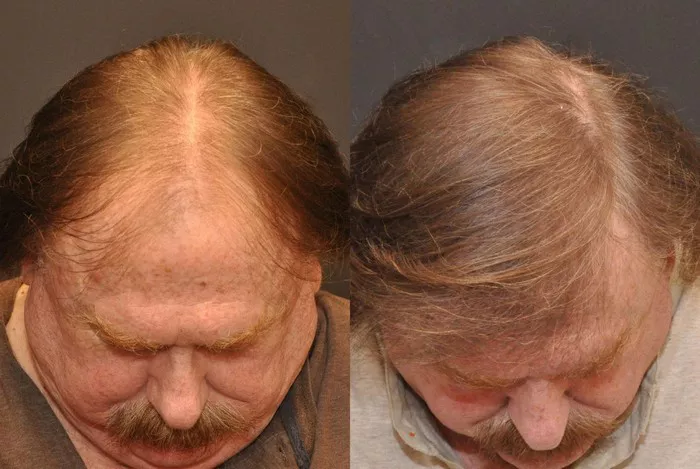In today’s image-conscious society, a full head of hair is often considered a symbol of youth and vitality. For those experiencing hair loss, particularly in the frontal area, a frontal hair transplant can be a life-changing solution. But before embarking on this journey to regain your hairline, it’s essential to understand the costs involved. In this article, we will delve into the factors affecting the price of a frontal hair transplant and provide you with a comprehensive guide to help you make an informed decision.
Introduction to forehead hair transplantation
Forehead hair transplantation, a specialized form of hair restoration, addresses receding or thinning hairlines, enhancing one’s facial aesthetics. This innovative procedure involves the extraction of hair follicles from a donor area, typically the back of the scalp, and strategically transplanting them to the forehead region. As a result, individuals can achieve a more youthful and natural-looking hairline. This introduction serves as a glimpse into the transformative world of forehead hair transplantation, where cutting-edge techniques and skilled surgeons work together to provide individuals with the confidence and appearance they desire. In the following sections, we will explore this procedure in greater detail, covering its benefits, cost considerations, and what to expect during the process.
Understanding the Cost Factors
Before we can put a price tag on a frontal hair transplant, it’s crucial to consider the various factors that influence the overall cost. These factors can be categorized into three main areas:
1. Geographic Location
The cost of a frontal hair transplant can vary significantly depending on where you choose to have the procedure done. Generally, clinics in major metropolitan areas tend to charge more than those in smaller towns or rural areas. For example, a hair transplant in New York City may cost substantially more than one in a smaller city like Denver.
2. Clinic Reputation and Expertise
The reputation and expertise of the clinic and surgeon play a vital role in determining the cost of a hair transplant. Highly reputable clinics with experienced surgeons often charge a premium for their services. However, choosing a well-regarded clinic can provide peace of mind and potentially better results.
3. Number of Grafts Needed
The extent of your hair loss will directly impact the number of grafts required for your frontal hair transplant. More grafts mean a higher overall cost. Your surgeon will assess your specific needs during the consultation and provide an estimate based on the required grafts.
The Average Cost Breakdown
Now that we’ve examined the key factors influencing the cost, let’s break down the average expenses you can expect when undergoing a frontal hair transplant:
1. Consultation Fee
Before any procedure, you’ll typically need to attend a consultation with your chosen surgeon. This consultation serves to evaluate your eligibility for the transplant and discuss your goals. Consultation fees can range from $50 to $200.
2. Cost Per Graft
The primary cost factor in a hair transplant is the price per graft. On average, the cost per graft ranges from $3 to $7. Keep in mind that the number of grafts you require will vary based on your individual needs.
3. Surgical Facility Fees
The surgical facility where your transplant is performed will charge a fee for the use of their space and equipment. These fees can range from $500 to $1,500.
4. Surgeon’s Fee
Your surgeon will charge a fee for their expertise and time. This fee can vary widely depending on the surgeon’s reputation and experience level. Expect to pay anywhere from $2,000 to $10,000 for the surgeon’s services.
5. Anesthesia and Medication
You’ll need anesthesia during the procedure, and you may require prescription medications post-surgery. These costs can range from $500 to $1,000.
6. Follow-up Appointments
After your frontal hair transplant, you’ll have several follow-up appointments with your surgeon to monitor your progress. These appointments are often included in the overall cost.
Additional Considerations
Aside from the direct costs, there are other considerations you should keep in mind when budgeting for a frontal hair transplant:
1. Insurance Coverage
Hair transplant procedures are generally considered elective, so they are not covered by health insurance. You’ll need to cover the entire cost out of pocket.
2. Financing Options
Many clinics offer financing options to help patients manage the cost of their hair transplant. These options may include payment plans or medical financing companies.
3. Quality Over Cost
While it’s natural to be mindful of the cost, it’s essential to prioritize the quality of care and the surgeon’s expertise. Choosing a skilled surgeon and a reputable clinic can lead to better results and increased satisfaction.
See Also: Can Hair Transplant Remove Gray Hair: A Quick Guide
Conclusion
In conclusion, the cost of a frontal hair transplant can vary widely based on geographic location, clinic reputation, and the number of grafts needed. It’s essential to conduct thorough research, attend consultations, and consider your budget carefully before making a decision. Ultimately, investing in a frontal hair transplant can not only restore your hairline but also boost your confidence and self-esteem, making it a valuable investment in your overall well-being.


